Perfect Wine Serving Temperatures [Every Wine Explained]
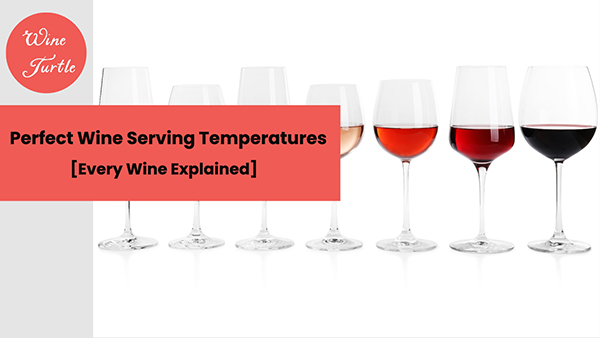
Some people get very particular about the serving temperature of their wine. Do they have a point?
I explain why wine temperature matters and the temperature ranges you should be looking at for each wine variety.
What is the Ideal Temperature for Serving Wine? Quick Answer
Unfortunately, there's no "one fits all" answer. Each type of wine is best enjoyed at a different serving temperature.
Here's a quick look at the best temperatures to serve each kind of wine at.
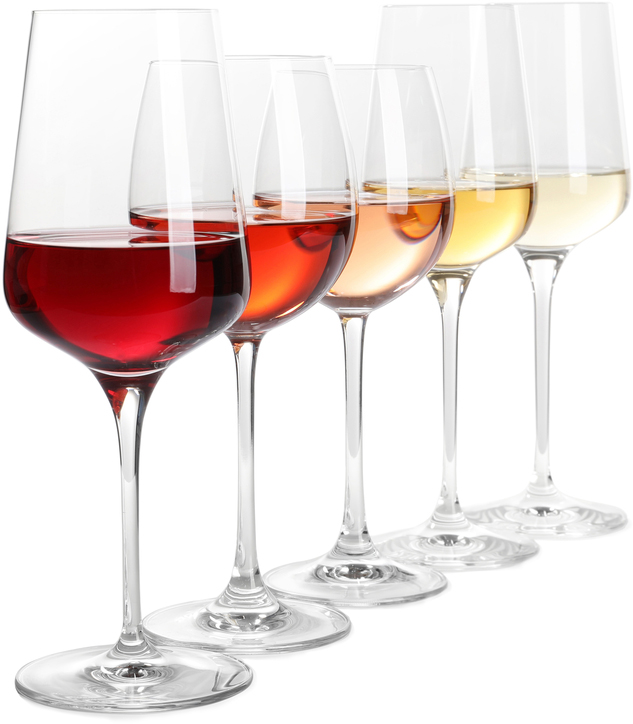
Why is Wine Temperature So Important?
Wine is a symphony of flavors and aromas, a complex concoction that's sensitive to environmental factors.
Temperature is one such factor that can dramatically affect a wine's performance, which is why serving it at the correct temperature is really important.
Let's see how the important components of wine can be affected by temperature.
Balance and Expression
Temperature has a direct impact on how a wine expresses itself. It affects the balance between the wine's various components such as fruit, acidity, tannins, and alcohol.
If served at the ideal temperature, these elements harmonize, and the wine displays its intended character.
Conversely, if served at a less-than-optimal temperature, one element may overpower the rest, throwing off the balance and muting the wine's true expression.
Flavor and Aroma
The wine's bouquet and the perception of its flavors are significantly influenced by temperature.
Volatile aroma compounds that give a wine its unique smell behave differently at different temperatures.
Serve a wine too cold, and it can dampen its aromatics, making it seem less expressive and nuanced. On the other hand, serve it too warm, and it may come across as overly alcoholic or oxidized.
Mouthfeel
Temperature also impacts a wine's texture and mouthfeel. For example, white wines served too warm may feel flat and heavy, while those served too cold may seem overly acidic.
Red wines, if served too cold, can feel overly tannic and harsh, whereas too warm, they may taste flabby and alcoholic.
Quality Perception
The temperature at which a wine is served can influence our overall perception of its quality.
A well-made wine served at the correct temperature can provide a deep, multi-layered tasting experience, enhancing our appreciation for the wine.
Conversely, even an excellent wine served at an inappropriate temperature may fail to impress or deliver its full potential.
White Wine Serving Temperature
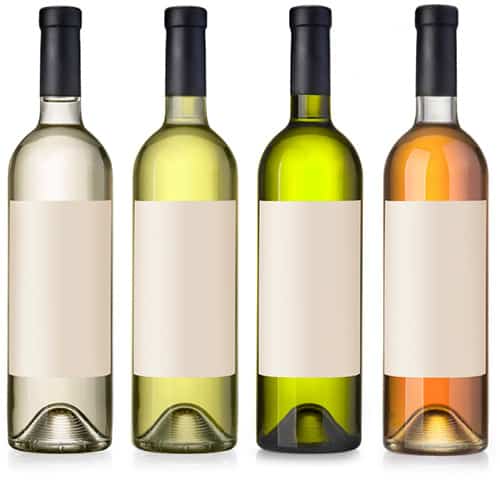
Understanding the optimal serving temperature for different styles of white wine can enhance the flavors, aromas, and overall drinking experience.
Contrary to the common belief of serving all white wines ice-cold, various styles of white wine shine at different temperatures.
Let's delve into the nuances of serving temperature for different types of white wines.
Light-Bodied White Wines
These wines, such as Pinot Grigio, Sauvignon Blanc, and Vermentino, are known for their high acidity and crisp, fresh flavors.
Serving them too warm can dull their vibrancy, while too cold can mask their subtle characteristics.
The ideal serving temperature for light-bodied white wines is between 7-10°C (45-50°F).
Full-Bodied White Wines
Full-bodied white wines, such as Chardonnay, Viognier, and Marsanne, often undergo oak aging and malolactic fermentation, giving them a rich, creamy texture that can handle a slightly warmer temperature. This helps to accentuate the complexity and depth of their flavors.
Serve full-bodied white wines between 10-13°C (50-55°F). The more oak the wine has the closer to 55°F you want to get.
Aromatic White Wines
Wines such as Riesling, Gewürztraminer, and Moscato are known for their expressive, perfumed aromas.
A slightly cooler temperature helps to preserve these aromatic compounds, maintaining the wine's fragrant bouquet.
The ideal serving temperature for aromatic white wines is between 6-8°C (43-46°F).
Sweet White Wines
Sweet white wines, including Sauternes, Late Harvest wines, and Ice wines, typically have a higher concentration of sugar and flavors.
Serving these wines too warm can emphasize the sweetness and alcohol, leading to a cloying taste. Conversely, serving them too cold can mute their complexity.
Aim to serve sweet white wines between 6-10°C (43-50°F).
Remember, these temperatures are guidelines, not hard and fast rules. Personal preference always reigns supreme in wine enjoyment.
The aim is to find a temperature that allows the wine's array of flavors and aromas to express themselves fully.
Red Wine Serving Temperature
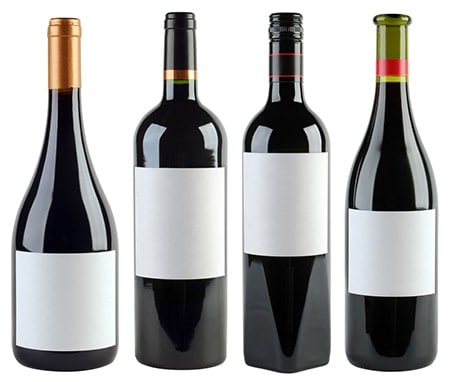
Serving red wine at the right temperature can significantly enhance its aromas, flavors, and overall sensory experience.
While the general rule has traditionally been to serve red wines at "room temperature", it's important to note that "room temperature" refers to a standard from a time when rooms were less heated, around 18°C (64°F).
Let's explore the ideal temperatures for different styles of red wine.
Light-Bodied Red Wines
These wines, such as Pinot Noir, Gamay (Beaujolais), and some expressions of Valpolicella, have a delicate balance of subtle flavors and tannins.
They are best served slightly cooler than other reds, around 12-15°C (54-58°F), to highlight their freshness and fruitiness without amplifying their acidity.
Medium-Bodied Red Wines
Wines like Grenache, Merlot, or Sangiovese have a bit more structure and tannin than light-bodied reds.
These wines express their array of flavors and aromas best at a slightly warmer temperature, between 15-18°C (59-64°F).
This helps to balance the fruit, acidity, and tannins and brings out the wine's complexity.
Full-Bodied Red Wines
Full-bodied red wines, such as Cabernet Sauvignon, Syrah, Malbec, and Nebbiolo, often have high tannins and a robust structure.
These wines benefit from being served at room temperature which is around 15-18°C (59-64°F).
This temperature can soften the perception of tannins and bring forward the rich, dark fruit flavors.
Aged Red Wines
If you're serving a well-aged red wine, it might benefit from being served at the warmer end of the spectrum, around 17-18°C (62-64°F).
This is because aged wines can be more complex and nuanced, and a warmer temperature can help reveal these subtle flavors and aromas.
Sparkling Wine Serving Temperature
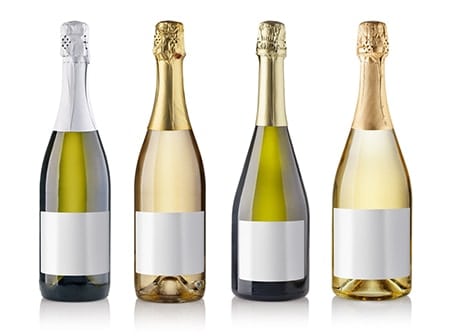
Whether it's Champagne, Prosecco, or Cava, sparkling white wines are generally best served at a cooler temperature to maintain their effervescence and freshness.
The optimal serving temperature for most sparkling white wines is between 6-10°C (43-50°F).
Vintage Champagne is on the higher end closer to 50°F so the rich creamy notes are more accessible.
Rosé Wine Serving Temperature
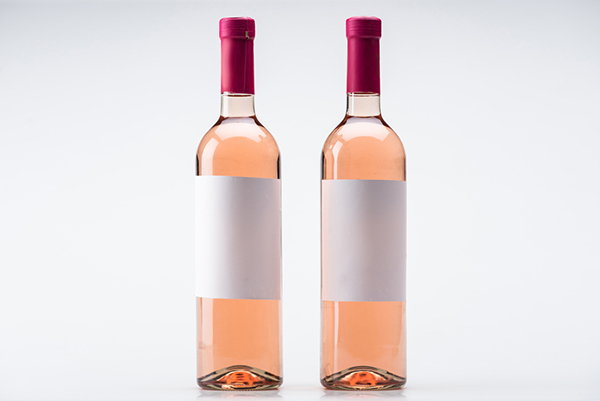
Rosé wines, with their alluring hues and refreshing profiles, have surged in popularity.
They can offer a delightful middle ground between the lightness of white wines and the structure of reds.
Understanding the ideal serving temperature for rosé wines can enhance your enjoyment and bring out their best attributes.
Light-Bodied Rosé Wines
Light and crisp rosé wines, such as those from Provence or the Loire Valley, are best enjoyed well-chilled. This helps highlight their bright acidity, fresh fruit flavors, and refreshing character.
Aim to serve these wines between 7-10°C (45-50°F).
Full-Bodied Rosé Wines
Some rosé wines, like those from warmer climates or rosés made from heartier grape varieties like Syrah or Mourvèdre, have a more robust, fuller-bodied profile.
They often exhibit richer flavors and can handle a slightly warmer serving temperature.
These wines are best served between 10-13°C (50-55°F). This allows the complexity of their flavors to shine without compromising their refreshing quality.
Sparkling Rosé Wines
Whether it's pink Champagne, Cava Rosado, or any other sparkling rosé, the presence of bubbles means these wines should be served cooler to preserve their effervescence and crispness.
The ideal serving temperature for sparkling rosé wines is between 6-10°C (43-50°F).
Dessert Wine Serving Temperature
Dessert wines, known for their sweetness, often come in an array of styles and complexities.
The serving temperature for these sweet delights can greatly affect their taste and your overall drinking experience.
Let's explore the ideal temperatures for various dessert wines.
Fortified Dessert Wines
Fortified dessert wines, like Port, Sherry, and Madeira, have higher alcohol content due to the addition of spirits.
These wines are best served slightly cooler than room temperature, around 13-16°C (55-60°F).
This temperature range helps balance their richness and alcohol while letting their complex flavors shine.
Late Harvest and Noble Rot Wines
Late harvest wines and those affected by 'noble rot' (like Sauternes and Trockenbeerenauslese), have a high sugar concentration.
These wines are best served cool, between 6-10°C (43-50°F), to balance the sweetness and prevent them from tasting cloying.
Ice Wines
Ice wines, made from grapes frozen on the vine, have intense sweetness and acidity.
Serving them well-chilled, between 6-8°C (43-46°F), helps accentuate their acidity, creating a refreshing balance with their sweetness.
Sweet Sparkling Wines
Sweet sparkling wines, like Moscato d'Asti or some demi-sec Champagnes, should be served cooler to maintain their bubbles and fresh fruit flavors, around 6-10°C (43-50°F).
Vin Santo and other Oxidative Wines
Wines like Vin Santo, which undergo oxidative aging, exhibit nutty, caramel-like flavors.
These wines should be served slightly chilled, around 12-15°C (54-59°F), to enhance their unique flavor profile and balance their sweetness.
Fortified Wine Serving Temperature
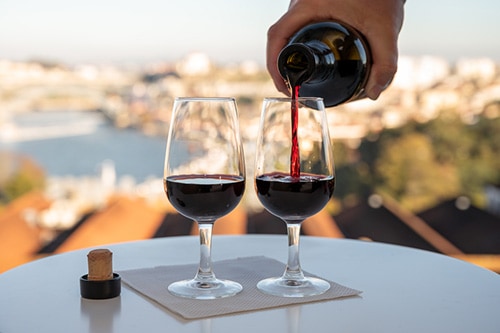
Fortified wines offer a delightful blend of tradition, complexity, and power, making them an exciting part of the world of wine.
These wines, with their higher alcohol content, require a careful approach when it comes to serving temperature.
Here's a guide to getting the most out of your fortified wines when it comes to serving temperatures.
Port
Port, one of the most famous fortified wines, comes in various styles. Lighter, fruitier styles like Ruby and Late Bottled Vintage Port are best served slightly chilled, around 12-16°C (54-61°F).
This temperature preserves their freshness and fruit character. Richer styles like Tawny or Vintage Port express their complex flavors best at a slightly warmer temperature, around 16-18°C (60-64°F).
Sherry
The ideal serving temperature for Sherry depends on its style. Lighter styles like Fino and Manzanilla are best served chilled, around 7-10°C (45-50°F), to highlight their dry, crisp nature.
Heavier, sweet styles like Oloroso and Pedro Ximénez show their rich, complex flavors best when served at a warmer temperature, around 13-16°C (55-60°F).
Madeira
Madeira, known for its high acidity and robust flavors, can handle a range of serving temperatures.
Dry styles like Sercial and Verdelho can be served chilled at around 10-13°C (50-55°F), while sweeter styles like Bual and Malmsey shine at slightly warmer temperatures, around 13-16°C (55-60°F).
Marsala
Dry Marsala wines, often served as aperitifs, are best enjoyed slightly chilled, around 10-13°C (50-55°F).
Sweet Marsala, usually served as a dessert wine, can be served a bit warmer to highlight its richness, around 13-16°C (55-60°F).
Vermouth
Vermouth, whether dry or sweet, is often enjoyed chilled, around 7-10°C (45-50°F), especially when used in cocktails. This temperature accentuates its refreshing and aromatic qualities.
How to Serve Wine at the Proper Temperature
Navigating the world of wine temperatures can be tricky, but with a few handy tools and tricks, you'll be serving your wines at their best in no time.
Here's a step-by-step guide to getting it right every time.
1. Know Your Ideal Wine Temperatures
Firstly, you should familiarize yourself with the ideal serving temperatures for different types of wine.
As we've discussed, these range from around 6°C (43°F) for aromatic whites and sparkling wines to 18°C (64°F) for full-bodied reds.
But, personal preference always trumps guidelines. If you enjoy your favorite Sauvignon Blanc just a little colder then forget those rules!
2. Use a Wine Fridge or Cooler
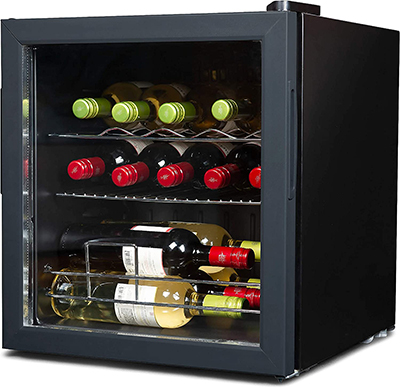
If you're serious about wine, a dedicated wine fridge is a great investment.
These devices allow you to set specific temperatures, providing an optimal environment for your wines.
A dual-zone wine fridge can accommodate both red and white wines at their respective ideal temperatures.
3. Use a Wine Bottle Chiller
A wine bottle chiller is a great little invention that can chill a bottle to the desired temperature in just a few minutes.
It takes the guess work out of using a regular refrigerator and it's not as big or as expensive as a dedicated wine fridge.
4. Use a Regular Fridge for Cooling
If you don't have a wine fridge, your regular refrigerator can do the job. As a rule of thumb, you might put white wine in the fridge two hours before serving, and red wine in for about 30 minutes.
Remember, a standard fridge is much colder than the ideal serving temperatures for most wines, so avoid leaving your wine in for too long.
Here's a list of approximate chill times when putting your wine in the fridge. It assumes that your wine started at a temperature of around 21°C - 23°C (70°F - 73°F).
5. Ice Buckets for Quick Chills
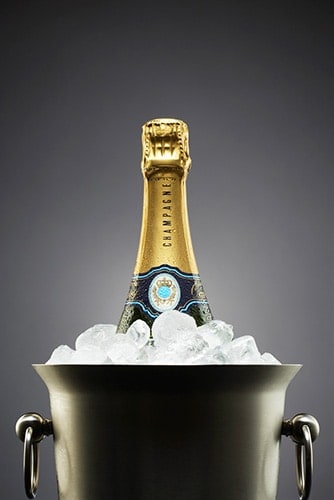
For a quick cool down, especially for whites, rosés, or sparklings, immerse the wine in an ice bucket filled with ice and water.
This is quicker than a fridge due to the better heat transfer of water. About 20-30 minutes should be enough for most wines.
6. Use a Thermometer
To ensure precision, use a wine thermometer. There are many types available, from traditional insertable ones to infrared versions.
This tool will help you make sure your wine is at the perfect temperature before serving.
7. Decanting Reds
If a red wine is too cold, consider decanting it. The larger surface area exposed to air will help the wine warm up a bit and can also enhance the flavors and aromas of the wine.
Decanting bold or aged red wines is recommended to allow wines to breathe a little before drinking.
8. Adjust to Your Environment
If it's a hot day or a cold one, you may need to slightly adjust how you serve your wine. You might serve whites a bit colder on hot days, or reds a bit warmer on cold days.
